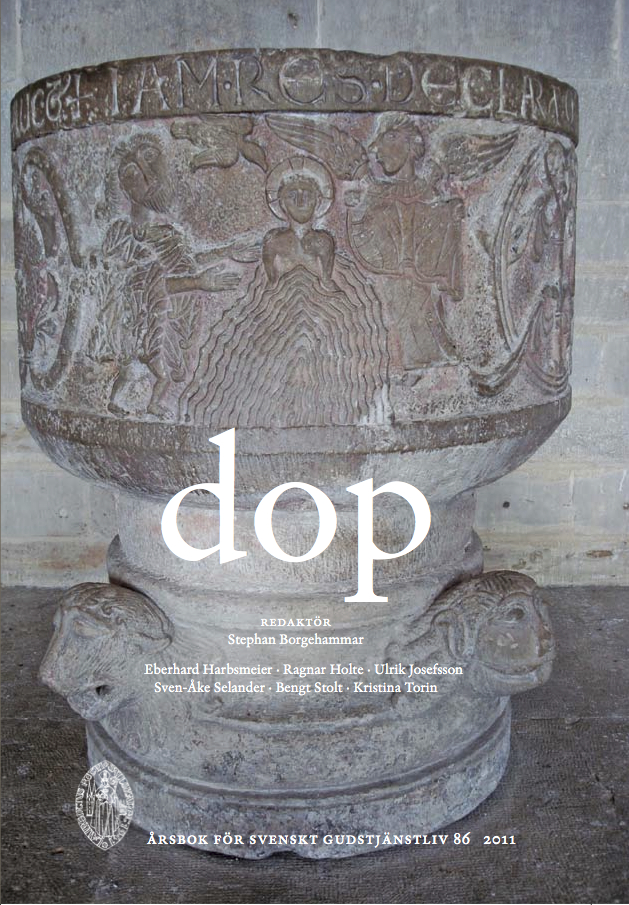Dopets innebörd i Svenska kyrkan. En studie av förhållandet mellan lärodokument och aktuellt informationsmaterial
Abstract
The Meaning of Baptism in the Church of Sweden. A study of the relation between doctrinal documents and current popular information
This study investigates how the Church of Sweden justifies that people should be baptised. How does the Church express the difference between “before and after”? Are some effects of baptism mentioned more frequently than others? Which effects dominate in different types of texts?
The survey begins with the texts that constitute the foundation of the faith, confession and doctrine of the Church of Sweden, to see what the effects of baptism traditionally are understood to be. The survey then continues with an analysis of popular texts on baptism used in the thirteen cathedral parishes of the Church of Sweden. The analysis generates a set of key concepts which I use to compare the effects of baptism in the popular texts with the effects that the official documents describe.
The most important official documents for this study are the Bible, some of the documents from the Book of Concord, the official decree from the Synod of Uppsala in 1593, the Church Ordinance and the books of worship currently in use in the Church of Sweden. Within these documents I find five frequently mentioned effects: baptism mediates the forgiveness of sins, gives fellowship with Christ and with the body of Christ (viz. the Church), results in a new birth and bestows upon the baptised the Holy Spirit.
From the thirteen cathedral parishes I have used the letters of invitation to baptism that they send to parents who have new-born children. I have also analysed the texts concerning baptism on the same parishes’ web pages. It turns out that this popular material seldom mentions the five effects of the official documents but introduces “new” key concepts instead. These concepts are better characterised as “reasons for baptism” than “effects of baptism” – for example, that baptism is an occasion for giving thanks or for welcoming the child. Something that is also highlighted in the parish texts is God’s promise to be present in the baptised person’s life. Though this promise is closely connected to Jesus’ words in Matthew ch. 28, the parish texts seldom bring out the central role of Jesus in baptism; they prefer to speak about “God”.
A question one may ask is whether this silence about Jesus and about the traditional effects of baptism depends on a fear, or cautiousness, within the Church of Sweden when talking about essential aspects of Christianity. Another question for further discussion is whether the “new” key concepts may be seen as a means for the parishes to communicate the depth of faith in a new era, as they are obliged to do according to the Church Ordinance. Have they found the right way to go?
Downloads
Publicerad
Nummer
Sektion
Licens
© författarna, Laurentius Petri Sällskapet för svenskt gudstjänstliv samt Artos & Norma bokförlag. Det är tillåtet att kopiera och använda material ur Svenskt Gudstjänstliv för forskningsändamål om källan anges. För övriga ändamål kontakta respektive artikelförfattare samt förlaget. Särskilda restriktioner kan gälla för bildmaterial.


